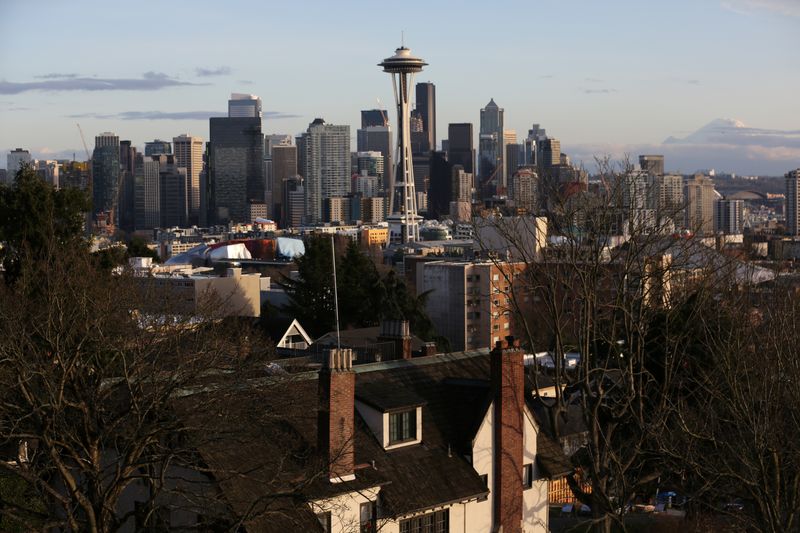WASHINGTON (Reuters) - U.S. services industry activity picked up in March, boosted by the rolling back of pandemic restrictions, but businesses continued to face higher costs as supply strains persisted.
The Institute for Supply Management said on Tuesday its non-manufacturing activity index rebounded to a reading of 58.3 last month from a one-year low of 56.5 in February. That ended three straight months of declines in the index and also signaled a shift in spending back to services from goods.
COVID-19 restrictions have been lifted across the country following a massive decline in coronavirus infections, unleashing pent-up demand for services like airline travel and dining out. The government reported last week that consumer spending on services increased by the most in seven months in February, while goods outlays declined.
Economists polled by Reuters had forecast the non-manufacturing index rising to 58.4. A reading above 50 indicates expansion in the services sector, which accounts for more than two-thirds of U.S. economic activity.
The ISM's measure of new orders received by services businesses rebounded to a reading of 60.1 from a 12-month low of 56.1 in February.
Its services industry employment gauge jumped to 54.0 after dropping to a 1-1/2-year low of 48.5 February, which also was the first contraction in the sub-index since January 2021.
The strong demand for labor was confirmed by March's employment report on Friday, which showed nonfarm payrolls increased by 431,000 jobs last month.
Despite the increase in hiring, services industries made little headway in reducing the backlog of unfinished work, indicating that shortages remained binding.
Russia's war against Ukraine is worsening global supply constraints. Prices for commodities like oil and wheat have surged since the Feb. 24 invasion of Ukraine.
The ISM survey's measure of order backlogs at services businesses edged up to 64.5 last month after surging to 64.2 in February. Its gauge of supplier deliveries slipped to a still-high reading of 63.4 from 66.2 in February. A reading above 50 indicates slower deliveries.

That meant services inflation pushed higher. The survey's measure of prices paid by services industries increased to 83.8 from 83.1 in February, indicating that inflation could remain uncomfortably high and elicit an aggressive response from the Federal Reserve.
The U.S. central bank last month raised its policy interest rate by 25 basis points, the first hike in more than three years. Policymakers have been ratcheting up their hawkish rhetoric, with Fed Chair Jerome Powell saying the U.S. central bank must move "expeditiously" to hike rates and possibly "more aggressively" to keep high inflation from becoming entrenched.